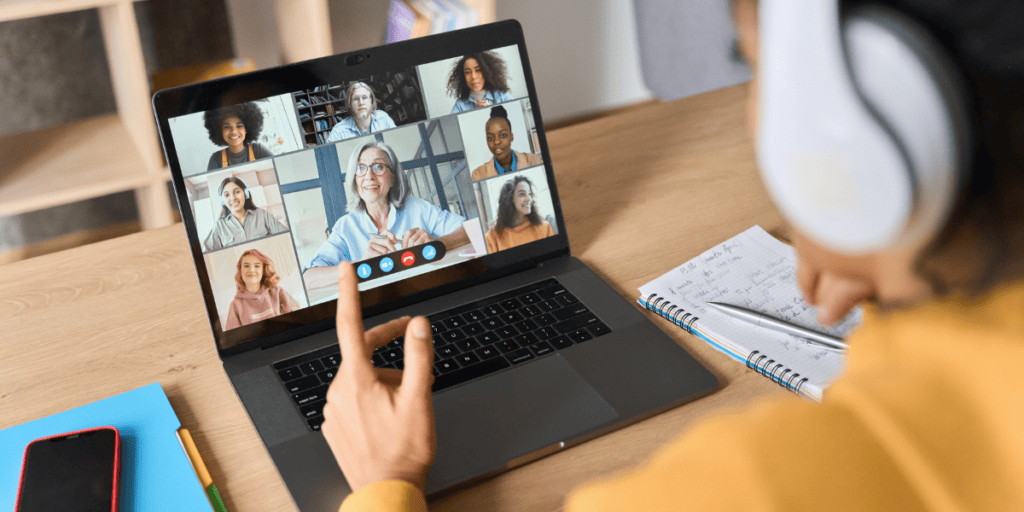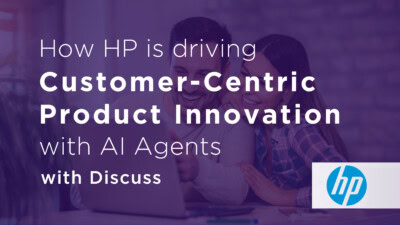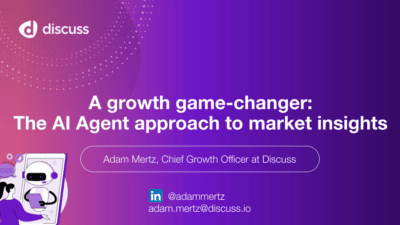How to Facilitate Meaningful Insights: Strategies for Effective Focus Group Discussions

Conducting a worthwhile focus group requires a strong purpose and well-defined objectives. This isn’t an ordinary chat; it’s an organized conversation designed to reveal deep insights through careful analysis of the target audience’s responses.
Surprisingly, the key is not only in asking the right questions but also in establishing a conducive environment for open, honest responses and successful management of participant’s expectations. Remember, clarity is your compass guiding the discussion.
Facilitating meaningful insights in focus group discussions involves proper preparation, clear objectives, well-crafted open-ended questions, skilled moderation, and a conducive environment. By employing active listening, probing techniques, and strategic question structuring, you can ensure that participants provide in-depth and valuable feedback for your market research endeavors.
Creating Meaningful Group Discussions
A meaningful group discussion is one where all participants feel comfortable expressing their thoughts and where insights flow freely. This requires meeting the expectations of the participants while also meeting the objectives of the focus group. Let’s dive into the key strategies that can help facilitate this kind of environment.
Set Clear Objectives
Having clear objectives is the foundation of any successful focus group discussion. Before you begin, you need to define what you’re trying to learn or achieve through the discussion. By setting clear objectives, you provide a guiding light for the entire discussion and ensure that every aspect of it works towards your desired outcomes.
It’s important to communicate these objectives with the participants as well. This helps them understand the purpose of the discussion and ensures that their contributions are aligned with the goals. It’s also a good practice to analyze the expectations of the target audience and ensure they’re well communicated.
Select Diverse Participants
Curating a diverse group of participants is crucial to achieving a well-rounded and insightful discussion. The diversity here refers not only to demographics such as age, gender, and occupation but also to differences in perspectives, experiences, and knowledge related to the topic at hand.
If everyone in the focus group comes from similar backgrounds or holds the same opinions, you’re likely to get limited insights. On the other hand, a diverse group brings different viewpoints, ideas, and experiences to the table, enriching the depth and breadth of the discussion.
Establish Trust and Comfort
Creating an environment of trust and comfort is essential for fostering open and honest discussions. Welcoming participants into a non-judgmental setting encourages them to share their opinions openly without fear of criticism or ridicule.
Create a Structured Agenda
Crafting a structured agenda is like drawing a map for your journey. Your agenda should identify key topics or themes to be discussed, break them down into subtopics or specific questions, and establish a logical flow for the conversation.
By implementing these strategies effectively, you can lay a solid foundation for engaging and insightful focus group discussions that yield meaningful and actionable results. Of course, a careful analysis of the responses of your target audience is included in these strategies.
In enhancing focus groups, it’s imperative to inspire active participation from all members involved. Meeting and managing their expectations contributes to the success of the whole process. Now, let’s explore how to effectively harness each participant’s input in our discussions.
Inspiring Active Participation
Creating an environment where everyone feels valued and heard is essential for encouraging involvement in focus group discussions. There are strategies you can employ to ensure that every participant feels comfortable voicing their thoughts and opinions. Let’s explore three key tactics to inspire active participation—
Facilitate Open Dialogue
One valuable technique for inspiring active participation is to ensure that open dialogue and candid conversations are encouraged. To achieve this, it’s crucial to create an atmosphere where every individual’s input is given equal value. By fostering an environment where participants feel respected and understood, they are more likely to contribute openly and honestly. Meeting their expectations will strengthen their trust while furthering the analysis of the collected data.
As the facilitator, it’s important to set the tone for open communication by actively listening to each participant’s perspective without bias or judgment. This engagement in their statements and behaviors not only encourages participants to share their thoughts but also cultivates a sense of inclusivity within the group.
Utilize Interactive Exercises
Incorporating interactive exercises and activities is another effective method to stimulate participation and creativity among group members. Exercises like surveys, for example, can offer quick insights into participant’s perspectives while also prompting deeper conversations. These exercises can range from brainstorming sessions to role-playing activities, designed to prompt thoughtful discussions and engage participants in a dynamic exchange of ideas.
By breaking away from traditional discussion formats, these exercises encourage participants to think differently and contribute actively to the conversation. When incorporated thoughtfully, interactive exercises serve as powerful tools for generating diverse insights and perspectives within the group.
Employ Visual Aids
Visual aids such as images, videos, or prototypes play a significant role in prompting thoughtful discussions and providing concrete reference points for participants. A picture is worth a thousand words, as the saying goes, and visual aids have the potential to spark engaging conversations by offering tangible examples for discussion. Whether it’s presenting statistics through infographics, showing results from participant surveys, or showcasing product prototypes, visual aids can evoke a deeper level of understanding and encourage participants to express their viewpoints more vividly.
These strategies not only encourage active participation but also foster an environment where all voices are valued, leading to richer behaviors of engagement and more comprehensive insights gathered during focus group discussions.
By fostering an environment where every voice is heard, we lay the groundwork for insightful discussions that pave the way for crafting thought-provoking questions.
Crafting Thought-Provoking Questions
When it comes to facilitating meaningful insights from focus group discussions, asking the right questions is essential. Open-ended queries are a powerful tool in this regard. By using open-ended questions, you’re encouraging participants to share detailed responses and explore the breadth of their experiences and opinions. Think of open-ended questions as the keys that unlock rich insights and thoughtful conversations.
Instead of asking yes or no questions that lead to short, limited responses, why not ask more engaging queries, like “Tell me about a time when…” or “Can you describe…”? These types of questions prompt participants to share their experiences and thoughts in greater detail, opening up the opportunity for more engaging and informative discussions.
Exploring Why and How
Further enhancing the quality of your questions involves incorporating follow-up prompts that explore the “why” and “how” behind participants’ responses. Understanding the underlying thought process and reasons behind their opinions provides valuable context and depth to the insights gathered.
For example, if a participant shares an opinion on preferring eco-friendly packaging, a follow-up prompt like “What led you to prioritize environmentally friendly packaging in this instance?” can unravel layers of motivation and reasoning behind their preference.
Balancing Depth and Clarity
The sweet spot lies in crafting questions that strike a balance between depth and clarity. So, effective survey questions or discussion prompts for this group could effectively engage and derive insights from the participants’ behaviors and engagement. Your questions should be clear and concise while aiming to unearth nuanced and comprehensive responses. It’s about seeking answers that are both enlightening and easily understood. As moderators of these discussions, you’ll have the vital task of directing this data collection process.
Complexity doesn’t always guarantee depth, just as simplicity doesn’t always imply shallowness. The beauty of an effectively crafted question lies in its ability to extract profound insights without leaving focus group participants puzzled or overwhelmed by complexity.
Crafting thought-provoking questions is an art form that’s key to sparking dynamic discussions and yielding compelling insights. Moderators play a critical role in this process. In the next section, we’ll explore how to create an inclusive environment that nurtures diverse perspectives within focus group settings.
Navigating Group Dynamics
Facilitating a focus group discussion involves not just managing the flow of conversation but also understanding and addressing the dynamics between the participants. The role of moderators becomes essential here. It’s important to create an environment where everyone feels comfortable sharing their thoughts and where diverse perspectives are genuinely valued.
Acknowledge Diverse Perspectives
Each participant brings a unique background and set of experiences to the table, contributing valuable data for collection. However, it’s not enough to simply acknowledge this diversity—actively encouraging and respecting diverse viewpoints can unlock valuable insights and generate meaningful discussions. By creating an inclusive environment, you allow each participant to contribute in their own way, preventing any single voice from dominating the conversation. This not only fosters a sense of equality but also enriches the quality of the insights gathered.
Shutting down diverse voices can stifle creativity, innovation, and the exploration of multiple solutions to a problem. Allowing diverse perspectives to be heard can open up new possibilities and lead to more comprehensive conclusions. Moderators need to keep this in mind during data collection from focus group participants.
Mediating Conflicting Views
Disagreements may arise within the group, which, if left unaddressed, can hinder the productivity of the discussion. As the moderator, it’s crucial to navigate these conflicts diplomatically while guiding the conversation in a constructive direction. Treat each conflict as an opportunity for deeper exploration and understanding, rather than viewing it as a disruption. Acknowledging differing views respectfully prevents any individual from feeling silenced or ignored, fostering an atmosphere of openness and inclusivity.
For instance, when two focus group participants have opposing views on a product feature, rather than dismissing one opinion in favor of the other, it’s beneficial to explore the reasons behind their perspectives. This not only encourages empathy and understanding among participants but can also lead to innovative solutions that incorporate elements from both viewpoints.
Encouraging Active Listening
Active listening is foundational for maintaining healthy group dynamics during a focus group discussion. Encouraging participants to actively listen to each other not only promotes mutual respect but also fosters a setting in which everyone feels heard and valued. This practice helps prevent misunderstandings and ensures that all ideas are given due consideration before being evaluated. The role of moderators becomes valuable here as they guide this process to ensure efficient data collection.
Navigating group dynamics is an intrinsic part of facilitating productive focus group discussions; acknowledging diverse perspectives, mediating conflicting views, and encouraging active listening collectively contribute to creating an environment conducive to generating meaningful insights. Moderators, as the leaders, shape these discussions and ensure the smooth collection of valuable data from all participants.
Sparking Innovation in Focus Groups
To foster creativity within a focus group, it’s critical to establish an environment that encourages unrestricted thinking and unearths unconventional ideas. This is a method for generating significant and insightful focus group data. It’s like creating a playground where imagination flourishes, where anything goes, and where the wildest ideas can lead to groundbreaking insights.
Encouraging “out there” thoughts often leads to unexpected breakthroughs that could revolutionize products or services. In one focus group session, this approach allowed for the collection of valuable focus group data. A participant shared a seemingly ludicrous idea that actually revolutionized a product design. The freedom to explore unconventional concepts led to a breakthrough, propelling the company toward innovative success.
Implement Design Thinking Techniques
Design thinking moves beyond what is expected and instead focuses on what could be. By integrating design thinking methodologies into focus group discussions, you can prompt participants to view challenges through a different lens. This approach is centered around empathy for the end user, defining problems creatively, generating innovative solutions, and testing and iterating ideas rapidly.
Incorporating design thinking encourages participants to challenge existing assumptions and approach problems with a fresh perspective. Through activities such as brainstorming, prototyping, and user testing, design thinking techniques inspire innovative problem-solving within the focus group setting.
Embrace Iterative Processes
By endorsing iterative thinking within focus groups, you create an atmosphere where evolving ideas are welcomed and celebrated. Instead of searching for the perfect solution right away, participants are encouraged to explore multiple concepts, allowing for the gradual evolution of ideas.
This approach values progress over perfection, empowering participants to take risks with their ideas and refine them through an ongoing process of feedback and iteration. Breakthrough innovations often stem from this open-minded mindset and willingness to iterate on existing concepts. The focus group data generated from this iterative process often provides critical insight.
By fostering creativity, implementing design thinking techniques, and embracing iterative processes within focus group discussions, you pave the way for groundbreaking insights that can steer your organization toward innovation and success.
Converting Group Insights into Action Plans
You’ve conducted a productive focus group discussion and have gathered a wealth of insights and observations that could potentially transform your approach. This wealth of data is representative of the expansive and diverse focus group data collected. Now comes the part where those insights transition from great ideas into actionable plans. This process involves identifying key takeaways, formulating actionable steps, implementing these plans, and measuring their impact.
Identifying Key Takeaways
Identifying key takeaways involves more than spotlighting the most interesting points discussed—it’s about pinpointing the critical insights that align with your research objectives. These are the pearls of wisdom that have the potential to drive your strategies forward. This is the essence of leveraging focus group data for a more significant impact.
For instance, if you’ve conducted a focus group to gather feedback on a new product prototype, you’ll want to identify key consumer pain points, unmet needs, or positive sentiments related to specific features. This information will guide the development team in refining the product design and marketing strategies. Additionally, it may be beneficial to categorize findings based on urgency, such as immediate action items versus long-term strategic shifts.
Formulating Actionable Steps
Translating identified insights into practical steps or strategies that can be easily implemented is crucial to leveraging the insights obtained effectively. It’s not enough to just have great ideas; they need to be translated into concrete actions. Involving relevant stakeholders from various departments during this stage ensures diverse perspectives in formulating the action plans and increases buy-in and commitment toward their implementation.
Implementing and Measuring Impact
The true test of any action plan lies in its execution and subsequent impact measurement. After formulating these plans, they need to be put into action. Furthermore, it’s crucial to continuously refine your strategies based on the feedback received during the implementation phase. A flexible approach allows you to tweak your action plans based on real-world data and observations.
Reach Out To Discuss For Insightful Focus Groups
In summary, moving from insights to action plans requires careful consideration and strategic planning. By identifying key takeaways, formulating actionable steps, implementing them, and measuring their impact, you can harness the full potential of your focus group discussions and turn valuable insights into tangible results.
Engage directly with your customers through live virtual conversations on our qualitative research platform. Designed specifically for interactive virtual focus groups and live interviews, our platform offers quick research set-up, global respondent connectivity, and rapid insight compilation and delivery through AI-powered tools. Collaborate seamlessly with your teams to scale your research efforts effortlessly.Unlock the power of group insights and transform them into actionable plans to drive your business forward. Start conducting insightful focus groups today with Discuss!
Ready to unlock human-centric market insights?
Related Articles

How to Optimize Engagement with a Virtual Focus Group: Strategies and Tips
Creating successful engagement in virtual focus groups starts with proper planning. This involves everything from the setup of your digital…
Creating successful engagement in virtual focus groups starts with proper planning. This involves everything from the setup of your digital…

Maximize the number of research projects completed by year’s end: Yes, it can be done
Ask most agencies managing enterprise-level market research (MRX) projects, and they’ll tell you they have a love/hate relationship with their…
Ask most agencies managing enterprise-level market research (MRX) projects, and they’ll tell you they have a love/hate relationship with their…

Seven Tips and Tricks for Better Online Focus Groups
The pandemic accelerated adoption of digital experiences at an unprecedented rate. It seemed like the switch was flipped almost overnight…
The pandemic accelerated adoption of digital experiences at an unprecedented rate. It seemed like the switch was flipped almost overnight…



